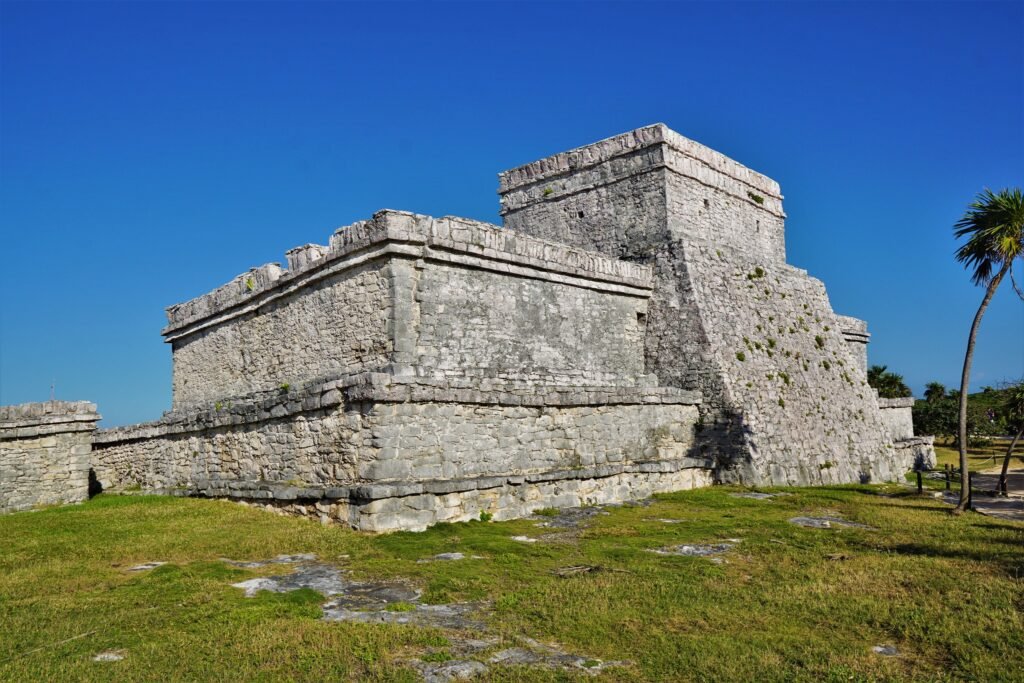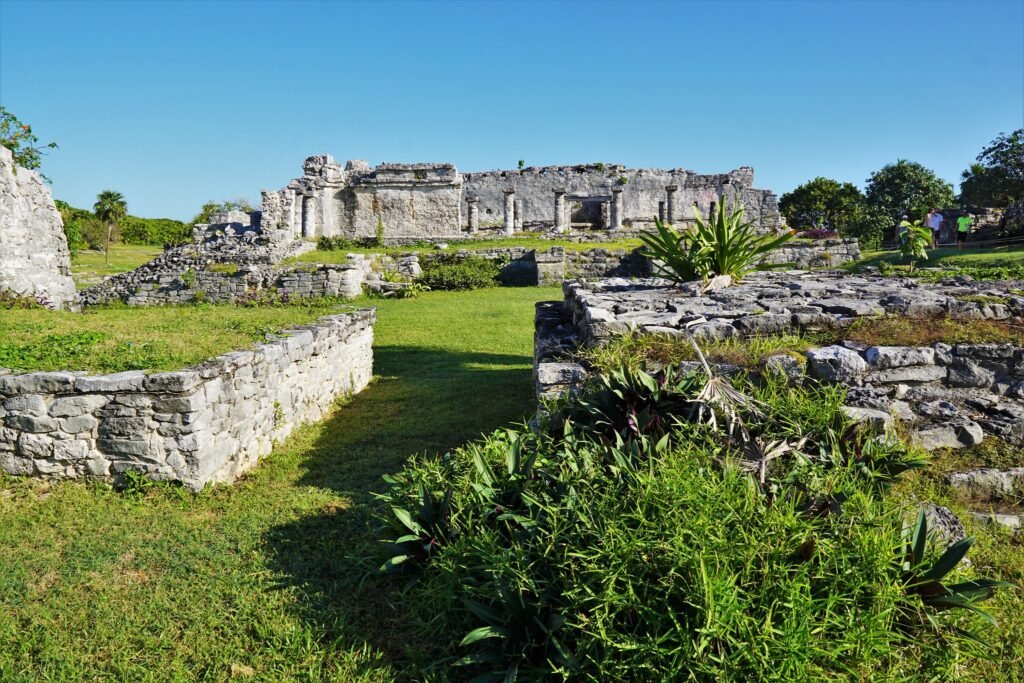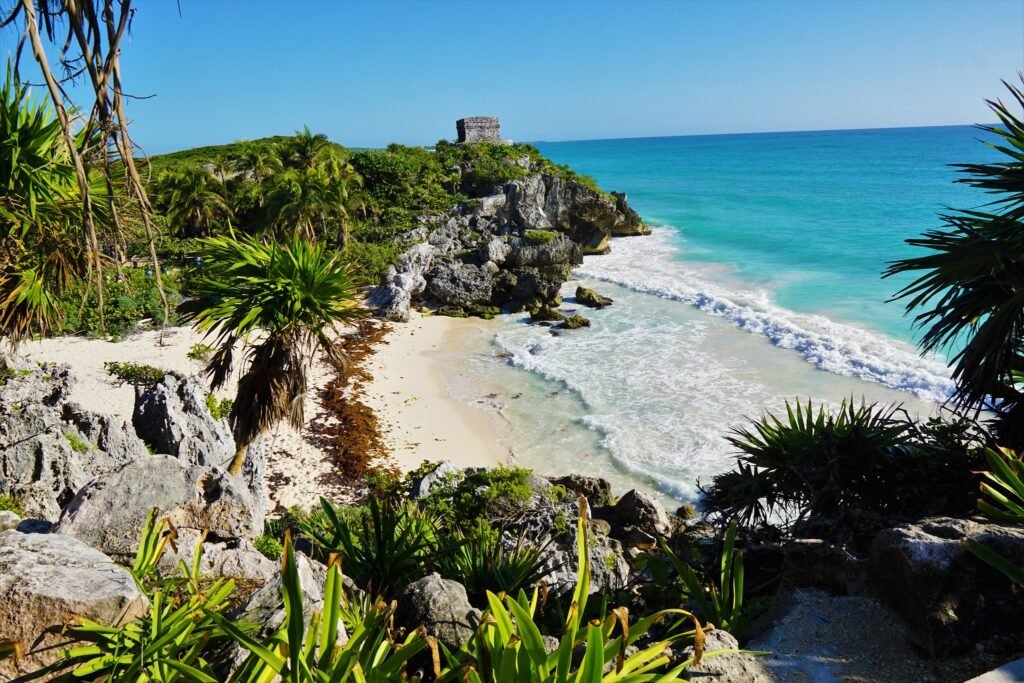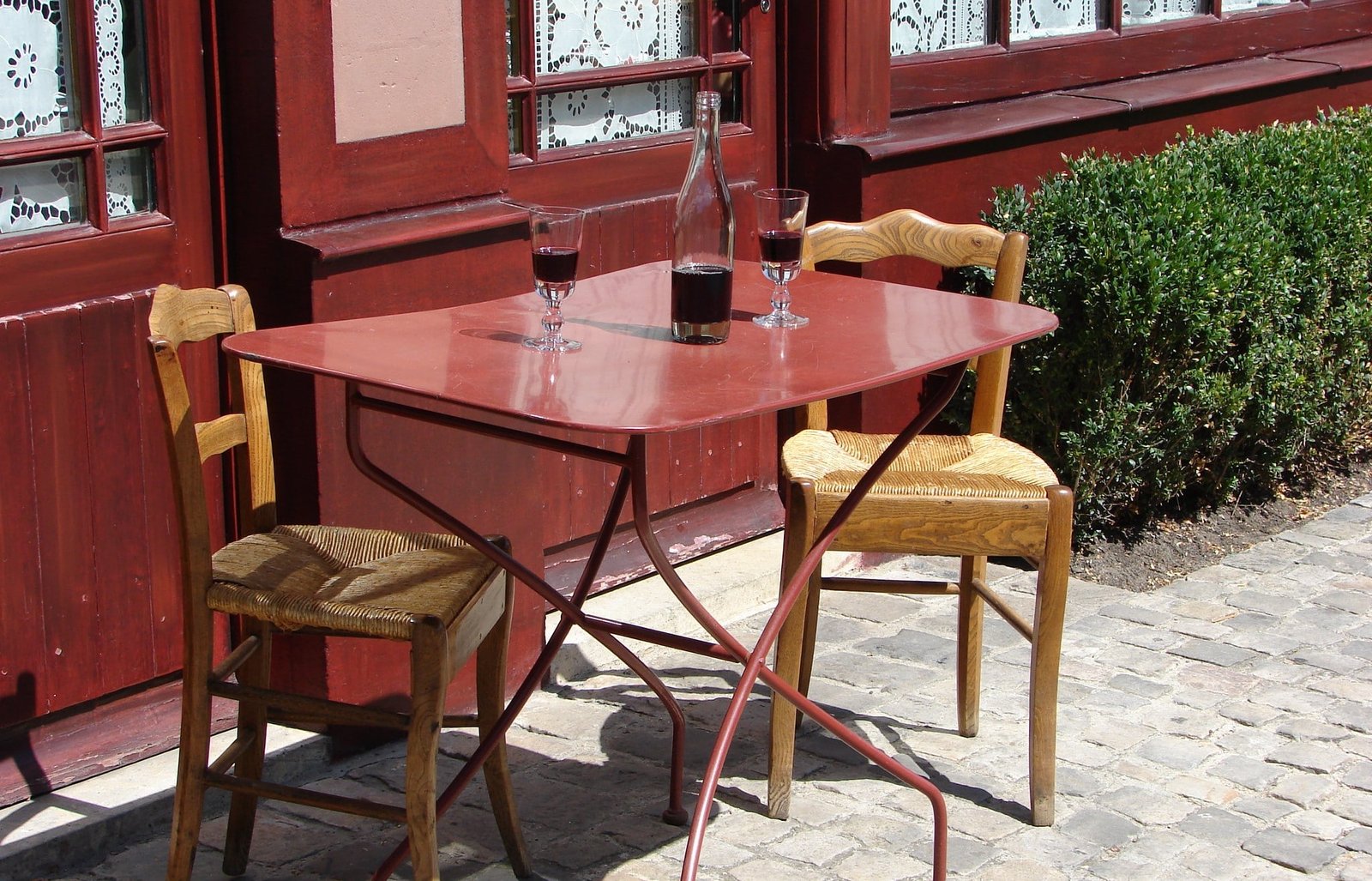The soft light of the early morning sun was gently seeping through the canopies of the trees as we were making our way through the jungle. Waking up super early and driving in a half awakened state for two hours from Puerto Morelos was totally worth it as we were rewarded by spending the morning discovering the ruins of one of the most enchanting Mayan cities – Coba.
Coba was one of the five Mayan ruins that we visited during our recent stay in Mexico. Twelve years ago, we were awestruck by the pyramids of Teotihuacan near Mexico City and were now eager to see what the Yucatan Peninsula had to offer. Our guidebook described Coba as one of the oldest Mayan cities in the area, having been founded between 50 BC and 100 AD and, most likely, by the Maya who arrived in Yucatan from Guatemala and Honduras. Also, for a long time, it was one of the least accessible Mayan sights hidden deep in the jungle.
When the park opened at 8 a.m., we were one of the first few people who entered. The air was fresh and crisp reminding us how we would wake up at 5 a.m. two years prior to visit the temples of Angkor to beat the buses of Chinese tourists and the scorching Cambodian heat. Walking through the park’s entrance gate, we veered right and immediately came across a giant step pyramid, the Iglesia, hidden in the trees. Imposing and looking like an unfinished cathedral, it majestically dominated this part of the park. The exact purpose of the Iglesia was not clear, but it might have served as the place of the Mayan religious ceremonies. The surrounding structures, including the living quarters and a ball court, were in great condition and presented well-preserved ruins of a Mayan city.
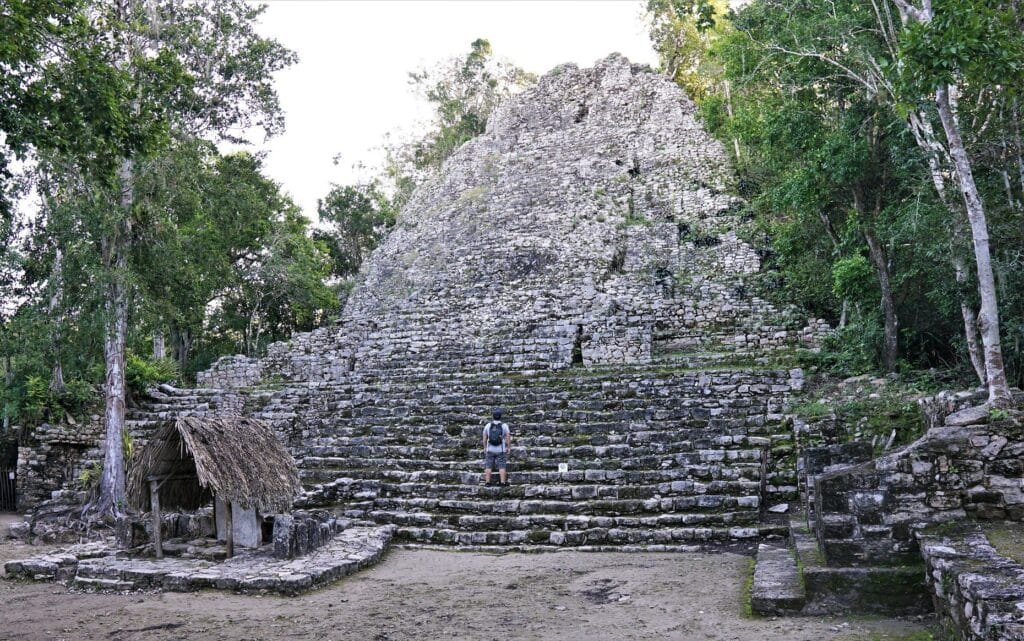
To better explore Coba, we rented bicycles from a nearby bicycle stand. Old and worn out with uncomfortable seats and bent pedals, the bicycles were making creaking and groaning noises and looked so prehistoric as if the Maya themselves rode them. Still, the bicycles served their purpose giving us the thrill of breezing through the jungle and getting us from place to place.
As we passed several groups of ruins, we finally made it to the main attraction of Coba -- Nohoch Mul, another freestanding step pyramid and one of the highest surviving Mayan pyramids. Before coming to Coba, I knew that Nohoch Mul was one of the few Mayan pyramids that people could still climb today. Yet, what I had read about the experience varied greatly. Some people described climbing as exhilarating and one of the highlights of visiting Coba; others described it with horror citing suffering from lightheadedness and dizziness. I decided not to tell Julia about the harrowing reviews to allow her to see and assess the risks of climbing to herself.
As with the Iglesia, Nohoch Mul is hidden in the jungle, and you have a feeling of discovering it when you step in front of it. When we came closer and looked up at the unending rows of uneven steps shooting up the sky, Julia quietly muttered under her breath:
“No way I am climbing it to the top.”
Mercifully, the problem solved itself as climbing was suspended that day as a measure of combating Covid-19 to prevent tourists from bumping into one another on this narrow staircase to heaven. We were not disappointed. We settled at the base gazing up at this beautiful pyramid caressing the jungle trees with its walls.
Leaving Nohoch Mul, we rode our bicycles for another hour, stopping to marvel at other groups of ruins, including the engraved stelae hidden in the lush greenery of the jungle. We also parked our bicycles and strolled on elevated rocky pathways that can be described as Mayan paved streets. The Maya called them “sacbe” or “white road”.
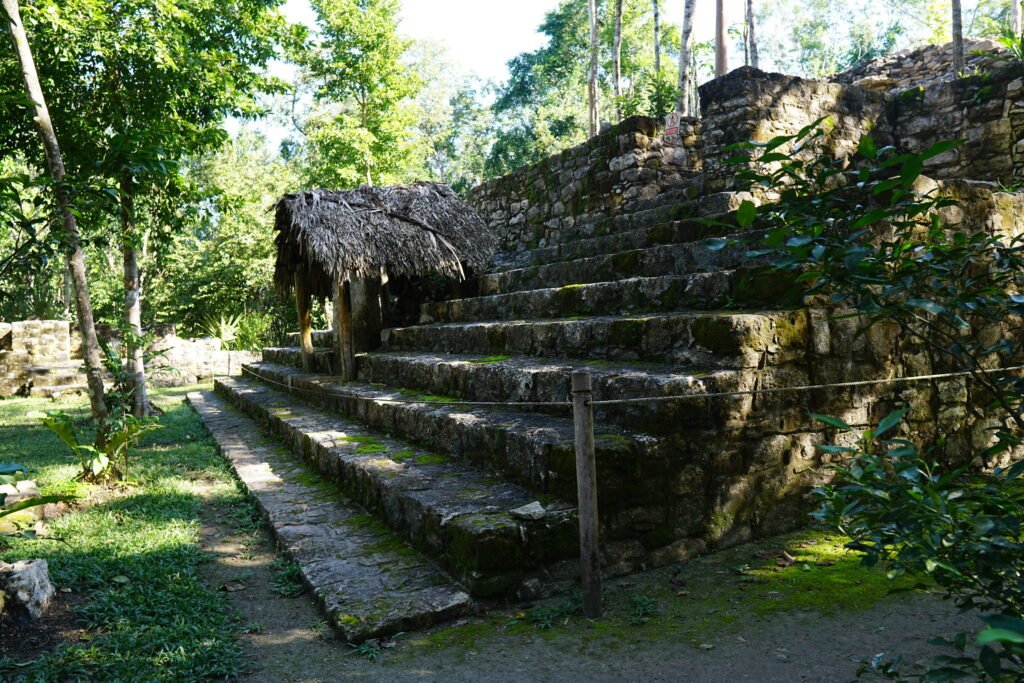
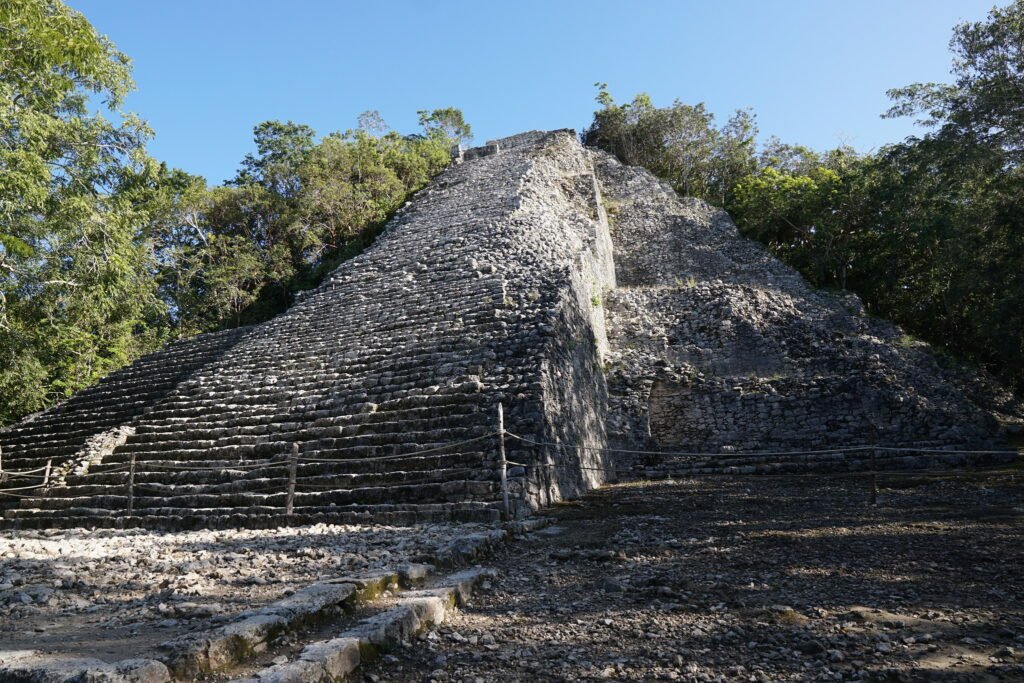
Around 11 a.m., we returned our bicycles and exited the park as it started to get overwhelmed with tourists and the jungle was starting to get steamy hot.
Out of the five Mayan ruins we visited in Mexico, each place had its own cool feature that we appreciated. And if we loved Coba for allowing us to play Indiana Jones, the Tulum ruins stole our hearts with their picturesque location.
As with Coba, we visited Tulum first thing in the morning to avoid the sweltering heat and thousands of people jamming the ruins every day. The vendor area by the ruins was pure tourist hell. There were never-ending rows of stalls selling cheap souvenirs and trinkets made in China. Because we were there early and there were not a lot of tourists, sellers of this junk were jumping at us relentlessly. As we were searching for an entrance to the ruins, I made the mistake of making eye contact with a guy manning one of such stalls. Looking at my wandering gaze, he immediately seized this opportunity and offered us souvenirs, then more souvenirs, and more souvenirs, and after seeing no interest from us whatsoever offered us … to see monkeys. He whispered his offer with a such conspiratorial murmur as if he were offering us bootleg alcohol in a speakeasy during Prohibition. Julia just gave him a stern look and we continued to march on trying not to make eye contact with anyone else.
With the gaudy tourist area behind us, we entered the park. Unlike Coba, one of the oldest Mayan settlements, the walled city of Tulum was one of the last cities built and inhabited by the Maya with its heyday spanning from the 13th to 15th centuries. The city was also known as Zama meaning the City of Dawn, as it sat on top of the cliffs overlooking the Caribbean Sea and facing the sunrise. Unlike Coba, well hidden in the jungle, the Tulum ruins today lay in the open with several key buildings scattered throughout the park. The main building, El Castillo, dominates the background. At a certain angle, with its colonnaded beams, the structure appears nearly Neoclassical in design and Julia thought that I lost my mind when I started to run around comparing El Castillo with the Milwaukee County Courthouse. Other notable buildings here include the Temple of the Frescoes and the Temple of the Descending God. Yet, as stated above, the main attraction of the Tulum ruins is not the ruins themselves but their breathtaking location.
Perched on top of the cliffs and juxtaposed against the turquoise waters of the Caribbean Sea and tropical lush greenery, the ruins create a vision of a true Mayan paradise. El Castillo and God of Winds Temple seating on opposing sides of the cliffs effectively served as guard towers and lighthouses protecting a little charming bay between them. As crowds of people and the blistering heat were finally catching up with us, we took a break in the shadow of the trees precariously hanging on the edge of the cliffs. Sitting in quiet meditation and marveling at the ruins and the sea, we imagined the time when the place was bustling not with tourists but served as an active Mayan port. The Tulum ruins are not extensive and can be easily seen in an hour or two. There is not much to do here, but the beauty of the place is more than enough to justify a short stop here.
The Mayan civilization that dominated this area for hundreds of years had mysteriously vanished from the face of the Earth leaving behind its secrets in places such as Coba and Tulum. Whether finding them deep in the jungle or on the towering bluffs overlooking the Caribbean Sea, the Mayan ruins intrigued, amazed, and astonished us, as we explored. In future posts, read about us visiting other Mayan ruins in the area, including the most famous Chichen Itza.
